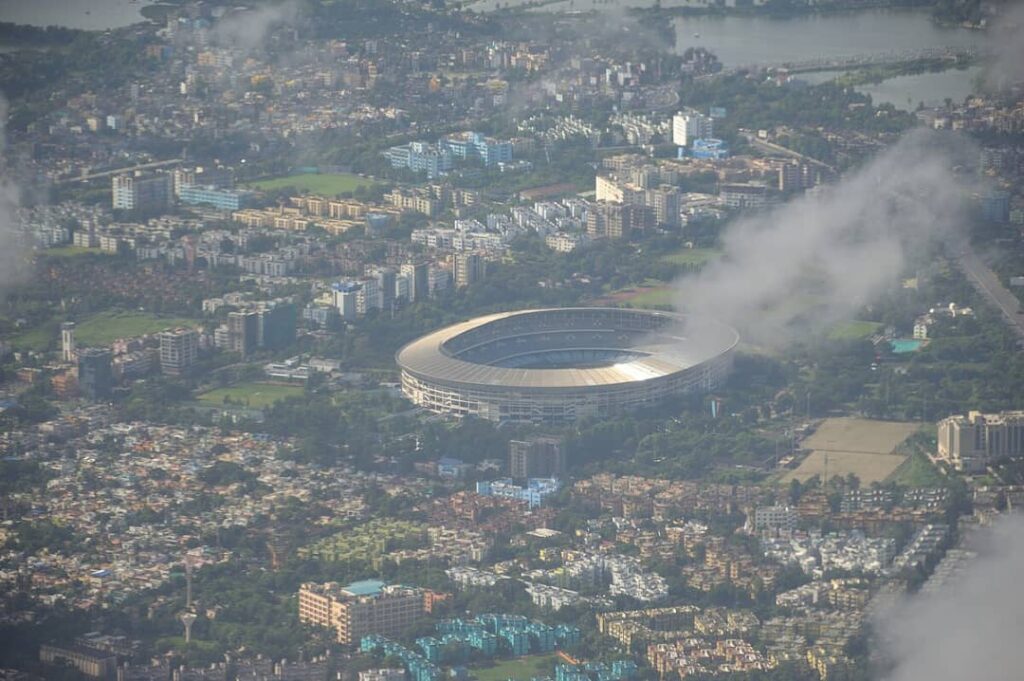
Introduction: Where Passion Meets Precision
Stadiums are where the science of engineering meets the emotion of sport. These awe-inspiring structures are not just architectural marvels; they are precisely calibrated machines designed to deliver sound, sightlines, comfort, and spectacle on a colossal scale. The science of stadium design involves acoustics, crowd dynamics, structural engineering, environmental sustainability, and user experience. In this post, we explore how stadiums are built to serve not just the game, but also the people, the planet, and the future.
Chapter 1: The Evolution of the Stadium
1.1 From Amphitheaters to Arenas
Stadium design can be traced back to Ancient Greece and Rome, with structures like the Colosseum and the Panathenaic Stadium. These early designs were driven by mass entertainment, acoustics, and crowd control.
1.2 20th-Century Reinvention
In the 20th century, steel and reinforced concrete enabled large-span roofs and better seating arrangements. The rise of global sport, especially football and athletics, transformed stadiums into icons.
1.3 The 21st-Century Smart Stadium
Modern stadiums integrate technology, sustainability, and modularity. Examples include Tottenham Hotspur Stadium with its retractable pitch and SoFi Stadium with its digital twin technology.
Chapter 2: Engineering for Capacity and Comfort
2.1 Structural Integrity
A stadium must be safe under extreme loads. Engineers use finite element analysis (FEA) to simulate stresses on the structure, especially in roof canopies, cantilevers, and large trusses.
2.2 Sightlines and the C-Value
Every seat must offer a clear view of the pitch. Designers use the C-value—a vertical measure of how much of the field a spectator can see over the person in front—to optimize rakes and seat spacing.
2.3 Accessibility and Flow
Stadiums are designed with universal accessibility. Crowd modeling software simulates ingress and egress under normal and emergency conditions to prevent bottlenecks and ensure safety.
Chapter 3: Acoustics and Atmosphere
3.1 The Science of Sound
Stadiums are designed to amplify crowd noise and reduce echo. Bowl-shaped seating, angled surfaces, and materials that reflect rather than absorb sound are commonly used.
3.2 Case Study: Anfield
Anfield’s famous roar is no accident. The steep stands and roof shape create a reverberating cauldron effect that boosts home-team energy.
3.3 Managing Noise Pollution
Stadiums near residential areas use noise dampening materials, double-skin facades, and noise maps to minimize external disruption.
Chapter 4: Lighting, Screens, and Spectacle
4.1 Illumination Design
Stadium lighting must meet broadcasting standards, eliminate shadows, and reduce glare. LED lighting with dynamic controls is now standard.
4.2 Giant Screens and Scoreboards
High-definition video boards enhance fan engagement. Engineers must account for wind loads and structural impact when installing these.
4.3 Light Shows and Projections
Modern stadiums incorporate light projections, lasers, and holograms for pre-game and halftime shows, demanding precise control and synchronization.
Chapter 5: Environmental Sustainability
5.1 Energy Efficiency
Stadiums like the Mercedes-Benz Stadium in Atlanta are LEED Platinum certified. Solar panels, rainwater harvesting, and efficient HVAC systems reduce carbon footprints.
5.2 Green Materials and Construction
Use of recycled steel, low-emission paints, and sustainably sourced wood helps reduce environmental impact.
5.3 Waste and Water Management
Smart systems recycle water and separate waste for composting or reuse. The use of greywater systems is rising.
Chapter 6: Technology and the Smart Stadium
6.1 Connectivity
Wi-Fi 6, 5G, and edge computing enable real-time stats, replays, and interactive fan experiences. Data analytics optimize crowd movement and concessions.
6.2 Digital Twins
SoFi Stadium and Allegiant Stadium use digital twin technology—real-time 3D replicas that help with maintenance, fan experience, and safety protocols.
6.3 Security and Surveillance
Advanced facial recognition, AI-assisted cameras, and biometric scanners ensure safety without slowing access.
Chapter 7: Weather and Climate Engineering
7.1 Retractable Roofs and Pitches
Stadiums like Wimbledon Centre Court or the Millennium Stadium use retractable roofs to manage weather disruptions.
7.2 Airflow and Temperature Control
Engineers model airflow to ensure comfort. Qatar’s Al Janoub Stadium uses cooling technology to maintain ideal pitch and spectator temperatures.
7.3 Wind Loading
Designers use wind tunnel testing and CFD simulations to shape stadiums for stability and comfort under high winds.
Chapter 8: Cultural Integration in Design
8.1 Local Materials and Art
Stadiums like the Mbombela Stadium in South Africa use local art and indigenous motifs to blend architecture with cultural identity.
8.2 Historical Tribute
Some stadiums incorporate elements of previous structures to preserve heritage. Tottenham’s new stadium features bricks from White Hart Lane.
8.3 Fan Consultation
Design teams often collaborate with fan groups to ensure that traditions, chants, and rituals are accommodated.
Chapter 9: Modularity and Future-Proofing
9.1 Temporary and Expandable Structures
Stadiums like the 2022 Qatar venues are built with removable sections to be downsized post-tournament.
9.2 Multi-Purpose Design
Modern stadiums can transform into concert halls, conference centers, or even esports arenas.
9.3 Innovation in Construction
Modular prefab components, 3D-printed seating pods, and robotic assembly lines are revolutionizing how stadiums are built.
Conclusion: The Stadium as a Living System
A stadium is not a frozen monument but a living system. It breathes through its crowds, adapts through technology, and endures through innovation. It serves not just as a home to sport, but as a beacon of community, culture, and science. As technology evolves and environmental imperatives grow stronger, stadiums will become even more intelligent, sustainable, and deeply human-centered.
Whether you see them as engineering marvels or cultural sanctuaries, one thing is clear: stadiums are among humanity’s greatest architectural achievements—where precision meets passion.





